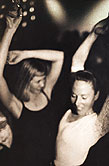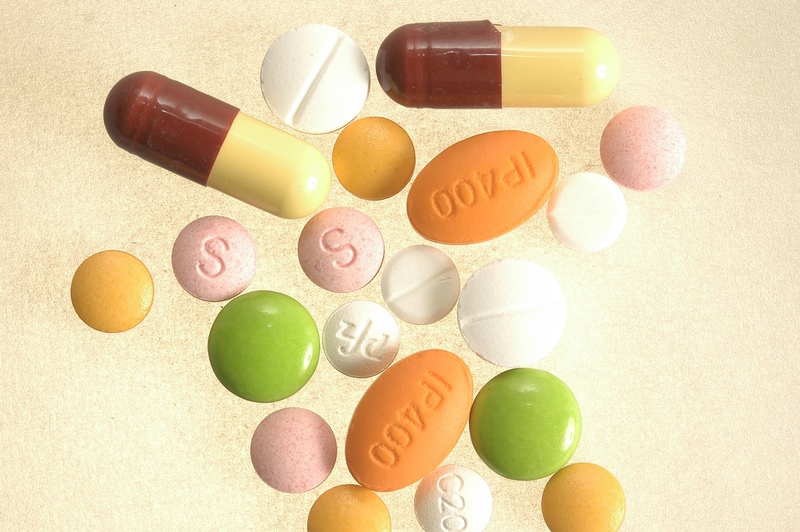
THURSDAY, June 10 (HealthDay News) — What seems like a carefree night of revelry at a “rave” can quickly turn tragic when the club drug ecstasy is involved, finds a new report on one such event from the U.S. Centers for Disease Control and Prevention.
Bad reactions to ecstasy, in some cases mixed with alcohol or other drugs, were implicated in one death and 18 hospitalizations among people attending a 2010 New Year’s Eve rave in Los Angeles, according to the report.
The rave — an all night dance party — was attended by about 45,000 people and held at a facility jointly owned by the city of Los Angeles, the County of Los Angeles and the state of California.
Ecstasy — an illegal synthetic amphetamine also known by its chemical acronym MDMA — “can be a very dangerous drug and occasionally people die, usually from a hyperthermic state with muscle breakdown and kidney failure,” noted Dr. James Garbutt, a professor of psychiatry at the University of North Carolina at Chapel Hill, who was not involved in the report.
Ecstasy use may be increasing and there is a sense among some partygoers that the drug is safe, he added. However, this report — like others before it — shows that the danger is real and “educating young folks in a realistic way about risks may help to reduce use,” Garbutt said.
The report appears in the June 11 issue of the U.S. Centers for Disease Control and Prevention’s (CDC), Morbidity and Mortality Weekly Report.
According to the CDC team, 18 people were treated at a hospital within 12 hours of the L.A. rave.
All were between 16 to 34 years of age, and nine were women. In addition to using ecstasy, 10 had used alcohol, and five used other drugs. Three patients were admitted to the hospital, one ending up in intensive care.
This patient had seizures, a breakdown of muscle tissue, kidney failure requiring hemodialysis, and liver failure. He recovered after a 28-day hospital stay, but continued to need dialysis.
The patient who died passed away at home some 12 hours after the rave, according to the report. The coroner put the cause of death as “multiple drug intoxication,” and friends reported that he had used ecstasy and cocaine while at the rave, and injected heroin upon his return home.
And the L.A. “cluster” of cases isn’t an isolated one. Less than six months after it occurred, ecstasy overdoses caused two deaths and at least five critical illness among people attending a rave in the San Francisco Bay area, the CDC notes.
Nationally, ecstasy-related visits have risen almost 75 percent from 2004 to 2008, according to the agency. And a recent national survey of teens found an increase in use of the drug in 2009, compared with 2008, and a decrease in perception of risk associated with it.
In Los Angeles County, the number of residents entering treatment programs who cited ecstasy as their drug of choice increased by 650 percent between 2005 and 2009, according to recent data.
Dr. Adam Bisaga, an associate professor of clinical psychiatry at Columbia University and an addiction psychiatrist at the New York State Psychiatric Institute, both in New York City, said that “considering the scope and the nature of the event, it is likely that drug/alcohol use was widespread, so it is not that surprising that a series of overdose cases related to this event was found.”
In addition, it is probable that many more used ecstasy and either had minimal adverse effects or did not seek medical attention, he said.
“Generally, fatality of ecstasy intoxication is low. However, combining it with alcohol increases behavioral/medical toxicity,” Bisaga said. “Both alcohol and ecstasy disrupt regulation of body temperature, commonly associated with adverse effects of intoxication, and alcohol impairs judgment, which might contribute to the greater use of ecstasy,” he said.
Clearly, strategies aiming at increasing awareness of risks associated with ecstasy use and the hazards of combining it with alcohol can help minimize use, Bisaga said.
“In addition, providing access to immediate medical care at the site for such events can minimize adverse outcomes and need to be aggressively employed during such events,” he added.
Another expert, Dr. Marc Galanter, director of the division of alcoholism and drug abuse in the department of psychiatry at New York University School of Medicine in New York City, commented that “it’s not uncommon for kids at raves to have psychotic reactions if they take too much ecstasy.”
Overdosing on ecstasy is relatively common and causes disorientation and delusional thinking, he said.
Most people who overdose aren’t seen in the hospital, but rather tend to sleep off the effects, Galanter said. “There are a lot of such episodes that don’t end up in the hospital,” he said.
More information
For more information on ecstasy, visit the U.S. National Institute on Drug Abuse.

